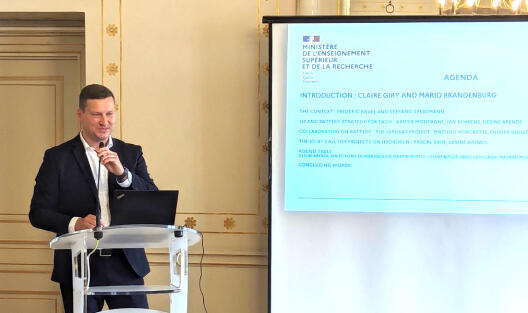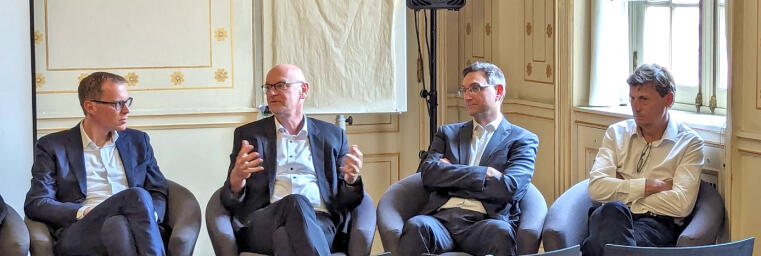Innovative Development of High-Performance Batteries
The Franco-German collaborative project HiPoBat – High Power Batteries, which is funded on the German side by the German Federal Ministry of Education and Research, was launched at the beginning of May with the aim of achieving high-power batteries that can charge quickly, have a long service life, and also ensure a high energy density. The focus is on developing high-performance solid-state batteries that can reduce the ecological, geopolitical, and economic pressure on the field of electrochemical energy storage. Forschungszentrum Jülich is coordinating the project, which will run for a period of three years.

Combining High Power Density with a Suitable Energy Density
Energy density and power density are important properties of batteries. Energy density indicates how long a battery can be used before it needs to be recharged. Power density, in contrast, is a measure of how quickly a battery can provide and release energy. A general difficulty lies in combining high power density with a suitable energy density.
High-performance batteries have various areas of application. In electromobility, for example, they could offer an alternative to batteries with ever-increasing energy densities. Electric cars might then only have a range of 300 kilometres, but could be recharged in less than 10 minutes. They can also be used as a small battery in hybrid vehicles to support the internal combustion engine while accelerating and to recover energy while braking. They are also indispensable for cordless power tools. In addition, they are required for many load distribution applications in stationary operation, for example for uninterruptible power supplies. These provide power during blackouts and voltage dips and are important for maintaining computer storage systems, industrial processes, communications, vital systems, security systems, and the stabilization of power grids.
All of these applications require a sufficient energy density coupled with high performance in both charging and discharging modes – a dilemma that the German and French scientists are aiming to overcome in the collaborative project. In particular, they are investigating how ions and electrons behave in the battery during charging and discharging and how the cells heat up in the process. The state of the art of current lithium-ion and sodium-ion technology with liquid electrolytes is considered as a reference. New materials, new cell designs, and a better understanding of the ageing process of batteries should enable the development of high-power lithium and sodium-based solid-state batteries.

Focus on the Availability of Resources
In addition to the intrinsic properties of the materials, such as the ionic and electronic conductivity and the shape and size of the particles, the design of the electrodes also plays a crucial role in the final performance of the battery. In particular, multi-scale modelling approaches, adapted manufacturing processes, and 3D microscopic methods are used for this purpose.
In addition, scientists in the HiPoBat project are keeping an eye on the availability of resources. Many raw materials in conventional batteries are imported from problematic countries. The desire for technological sovereignty and sustainability has led to increased interest in sodium batteries in particular. Sodium is a common element that is contained in table salt, for example. A technology that does not use cobalt, nickel, graphite, or lithium would protect the environment, reduce the pressure on policymakers, and strengthen the Franco–German economy.
The HiPoBat project is being led on the German side by Prof. Dr Olivier Guillon, IEK-1 of Forschungszentrum Jülich and Prof. Dr Martin Winter, MEET Battery Research Center at the University of Münster and Helmholtz Institute Münster (IEK-12; HI MS) of Forschungszentrum Jülich and, on the French side, Dr Mathieu Morcrette, Université de Picardie Jules Verne, and Prof. Dr Jean-Marie Tarascon, Collège de France. Also involved in the project are, among others, Dr Markus Börner and Dr Johannes Kasnatscheew, MEET Battery Research Center, as well as Dr Isidora Cekic-Laskovic, Dr Mariano Grünebaum and Dr Gunther Brunklaus from Helmholtz Institute Münster.

